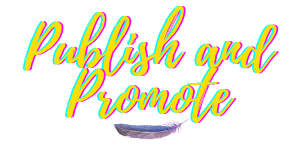What Is Proofreading and Why It’s Crucial to Success
Have you ever finished your manuscript and wondered if it needs proofreading, a developmental edit, or a copy edit? Then you wonder which type of edit to choose, if you need them all, and who to hire.
Disclosure: Some links above may contain affiliate partnerships, meaning, at no additional cost to you, Publish and Promote may earn a commission if you click through to make a purchase. You can read our affiliate disclosure in our privacy policy.
In this article, I show you what proofreading is, how to use it to set your book apart, and tips on how to become your own editor.
Table of Contents
Proofreading Defined
Proofreaders perform the final edit on a manuscript before it goes to the printer or gets published as a digital copy. Because of this, proofreading is an invaluable part of the publishing process (more on why later!).
When it’s time for your book to enter the proofreading stage, all other edits have already happened. The proofreader checks for typos, grammar, punctuation, and formatting issues. This seems like an edit though…right? So what’s the difference between editing and proofreading?
Editing Versus Proofreading
Developmental editing is a macro edit that focuses on the overview of your story: plot, characters, pace, overarching themes, etc. A line edit is a comprehensive view—precisely a line-by-line edit of your manuscript. This is where you change sentence structure, tighten dialogue, and enhance the flow of sentences.
Proofreading is your last chance to catch typos, missing words, formatting issues, etc.
Then What’s A Proof?
Unlike proofreading, Proof is not a type of edit but the final, physical copy of your manuscript before you publish it for your readers. You can use your Proof as advanced reader copies (ARCs) for your launch team.
When you look at your proof, you can spot typos you may have missed. Printing your proof allows you to view your manuscript in a different format, which can help you notice issues you missed in the digital format.
How To Set Your Book Apart
With an astonishing 3,000 new titles released daily in the US, it’s imperative to stand out. To set your book apart, you can use self-proofreading to your advantage. This may seem counterintuitive. Aren’t you supposed to hire a proofreader to edit your manuscript?
Though I support the idea of having someone else review your book before it is printed, you can also take important actions before your book even reaches the proofreading editor.
Become Your Own Editor
One cannot overstate the importance of self-editing. There’s a big difference between writing a story you are passionate about and writing a story well. Although writing is subjective, you can learn a few tips and tricks to become your own editor, such as
Reading your manuscript aloud
Listen to the voice and tone. Is it active or passive?
Are you telling the story or using sensory descriptions to show the scene? For example, she walked into the room and looked mad OR her cheeks were red as she stomped into the room. Do you hear and feel the difference between telling and showing?
Become Your Own Proofreader
You can also take practical steps to clean up your manuscript through proofreading before hiring a proofreader. Here are a few tips that help me:
- Finish the final edit of your manuscript
- Give yourself a few days or even weeks away from your manuscript
- Proof your manuscript on your computer
- Print your manuscript and proof the hard copy
- Giving yourself time between proofreading helps you find errors in your writing.
Why You Should Hire A Proofreader
Hiring an editor to proofread your manuscript before it goes to print is crucial for two reasons.
#1–Editors Catch Errors You Missed
No matter how often you edit your story, you are the original creator, so your eyes are bound to gloss over some mistakes.
#2–Editors Add a Layer Of Professionalism
I don’t know about you, but finding a typo in a book pulls me out of the story.
Hiring a professional editor adds a layer of professionalism to your writing. You could be the most credible writer on your specific topic, but if your published manuscript sports a typo in the first chapter, readers are bound to notice. Your book review rating can be affected when readers spot grammatical errors.
Remember You Are Human
After reading about proofreading and typos, you may feel a little overwhelmed. If you write nonfiction, your manuscript may be at least 40,000 words. And if you write fiction, your novel could exceed 100,000.
While your first page and early chapters should be typo-free, it’s not uncommon for a full-length book to include a few errors. To ensure success, it’s crucial to hire a professional editor.
Download our Free Self-Editing Checklist to get started.
Liked this post? Share it with other writers and authors.

